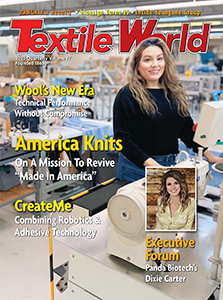ARLINGTON, Va. — January 15, 2012 — New research from the University of Arkansas quantifies
benefits that apparel suppliers can gain from the use of radio frequency identification (RFID), it
was announced today by the American Apparel & Footwear Association (AAFA) and GS1 US, the
study’s sponsors.
In a year-long project, researchers found the potential for suppliers to realize both top-
and bottom-line improvements via increased inventory accuracy, cycle count reductions and minimized
chargebacks. The results were presented during a workshop held by the VICS Item Level RFID
Initiative at the National Retail Federation’s Big Show in New York. The research is available for
download from the University of Arkansas Web site.
“The University of Arkansas report published today offers a greater understanding of the many
uses of RFID technology for the apparel industry particularly in the area of inventory accuracy,”
said AAFA Special Advisor Mary Howell. “By exploring these use cases, apparel and footwear brands
can begin to see the full range of benefits RFID can provide when working to remain competitive in
the global market by streamlining the supply chain and continuing to deliver quality, safe, and
affordable clothes and shoes to American consumers.”
Key Findings
The research — titled “Supplier Return on Investment Use Case Data Collection and Analysis” —
is the second phase in a three-phase study commonly referred to as the “Many-to-Many study.” It
focused on three supplier use cases identified during Phase I of this research published in January
2011.
Researchers measured the benefits that apparel suppliers can achieve by adopting RFID based
on GS1 Electronic Product Code (EPC) standards. They quantified the effects of EPC-based tracking
on improving the suppliers’ inventory accuracy, along with the effects on their productivity,
costs, and revenues.
In one use case, increased inventory accuracy, researchers discovered that suppliers’
estimates for their outbound shipments were much higher than the actual shipment count accuracy, in
part because the companies were auditing very small percentages of those shipments. The costs of
incorrect shipments, including chargebacks, are very high. With EPC-based RFID enabling audits on
100 percent of shipments, the frequency of incorrect shipments can drop to zero, creating savings
equal to the cost of implementing the RFID system.
“The research captures the first efforts of retail suppliers to shift their focus from just
playing ‘catch up’ to retailer source tagging requirements, to truly leveraging the full value of
item level tags by discovering the benefit and the value in their own supplier operations,” said
Justin Patton, Managing Director, ITRI/RFID Research Center, University of Arkansas.
“The simple concept behind the study is to answer the question, What happens when suppliers
move beyond EPC tagging just for their retail partner’s sake, and begin to internally capture and
use EPC data from their tagged items?” said Patrick Javick, vice president, industry engagement,
GS1 US. “Retailers use standardized RFID technology to improve inventory accuracy, and now with
EPC, suppliers can also feel confident of the high level of accuracy in their shipments.”
In addition to the key findings, the research highlights the critical relationship between
apparel suppliers and retailers and encourages continued collaboration in the widespread adoption
of RFID. As such, AAFA and GS1 US are active supporters of the VICS Item Level RFID Initiative
(VILRI). The initiative, formed in 2010, is an inter-industry group of retailers, manufacturers,
and industry stakeholders with the mission of exploring the benefits that EPC-enabled RFID
technology holds for the retail industry.
Research results for the Phase II University of Arkansas supplier study were captured in a
paper available on the University of Arkansas Web site. They were also discussed during webinars
hosted by AAFA and GS1 US in December. Recordings are available for replay on the AAFA Web site.
Posted on January 24, 2012
Source: AAFA




